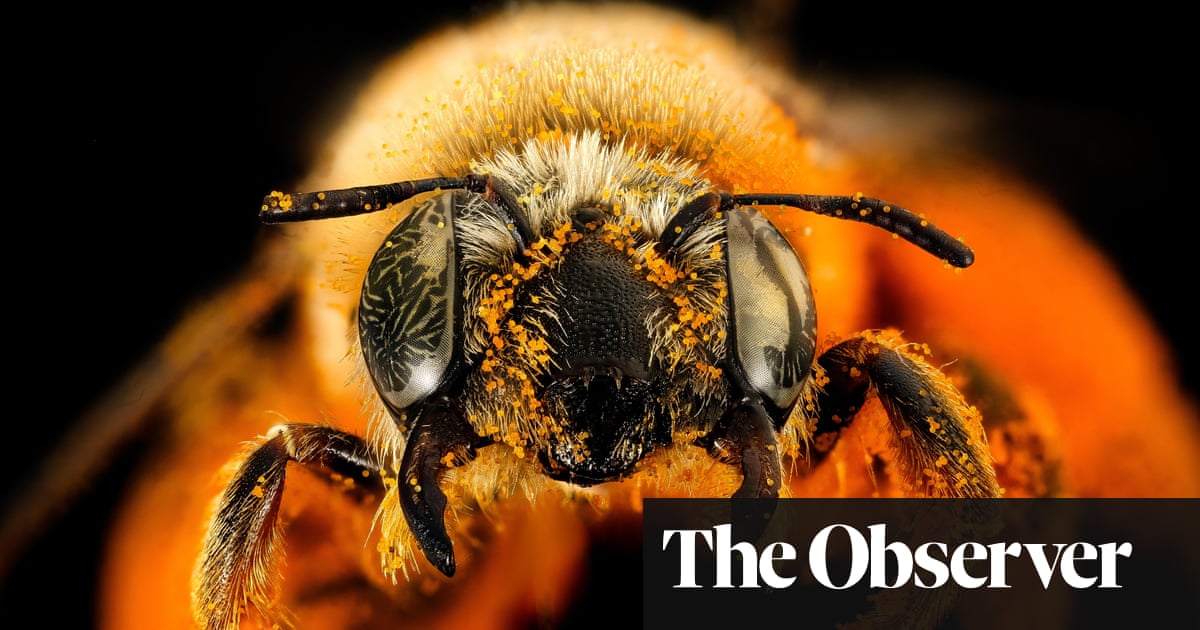The bees, of course, preferred the sweetest 40 percent sucrose solution. But researchers then repeated the experiment with a twist: The yellow high-sugar feeders were turned up to 131 F — enough to cause discomfort to the bees, but not injury. The pink feeders, which ranged from 10 to 40 percent sucrose, remained unheated.
When the unheated feeder contained just 10 or 20 percent sucrose, bees kept drinking from the high-sugar feeders despite the pain. But when the unheated feeder contained 30 or 40 percent sucrose, many bees migrated over to it, using associative memories to avoid the pain of the heated feeder while still being able to enjoy a high-sugar snack.
“Instead of being sort of a robotic reflexive response, which would be them always avoiding the heat in any situation, they're able to weigh up the different options and then suppress this response,” Gibbons said.
“Work like this recent paper, which shows motivational trade-offs, very strongly suggests pain experience is in some sense quite revolutionary,” says Heather Browning, a philosopher and scientist at the London School of Economics, who was not involved in the study.
One of the reasons it’s revolutionary, according to Browning, is because the ability to make motivational trade-offs is an important marker in determining sentience.
“At least one of the roles of sentience for an organism, one of the reasons that [sentience] evolved, is to help an animal make trade-offs like this,” says Browning. “It's to help them have flexible decision-making when they have these competing motivations.”
However, it’s not formal proof that bees are sentient or that they feel pain, the researchers cautioned, given the inherently subjective nature of pain and consciousness. Even understanding consciousness in humans is still a mystery, something known in science as “the hard problem.”
But the researchers do say the possibility that bees have a capacity for pain and suffering should be taken seriously, and the findings could apply to some other insects as well.
As revolutionary as the new study may be, it won’t usher in a revolution of insect rights — just look at how we treat many birds and mammals despite general consensus on their sentience.
Researchers are at the beginning of what will likely be a long slog to better understand if, and how, insects are sentient. But the findings do serve as one more proof point that the number of species we include as sentient may be undercounted — and grossly so, given that there are an estimated 10 quintillion insects alive at any moment (1 quintillion is a million trillion).
The debate over who gets to be in the sentience club
There is consensus among those who study consciousness that birds and mammals can possess sentience. Though there are some outlier skeptics, there’s also consensus that fish feel pain, an important indicator of it. But the jury is still out on insects, and probably will be for some time.
Much of insect researchers’ current focus is just figuring out what biological markers of sentience are, though the demonstrated ability to make motivational trade-offs, like Gibbons’s bees did, is one of them.
The study builds upon our understanding of insects’ capacity for pain, but it doesn’t provide definitive proof that bees or other insect species are sentient. However, using the precautionary principle — the idea that we should err on the side of minimizing harm in the face of limited information and uncertainty — let’s suppose that they are. Should that change how we treat them?
Bees and other insects might feel pain. Now what?
The debate over whether insects are sentient may seem frivolous, given how distant they feel from mammals, let alone human beings. But every past debate over who deserves moral attention and just how wide our circle of concern should be has seemed frivolous to some. If just a small fraction of the 10 quintillion insects alive right now can feel pain, some changes may need to be in order.
Many cultures around the world have long eaten insects, but in recent years there’s been a rise in insect factory farming — primarily to supply feed for factory-farmed chicken and fish, rather than for direct human consumption. It’s an emerging trend we might want to think twice about.
If we sourced more protein from insect farms instead of cattle, pig, and chicken farms, it might be a win for human health. But if commonly farmed insects, like crickets and mealworms, can feel pain, it could be a moral catastrophe orders of magnitude worse than livestock farming, given the astronomical numbers of insects that would need to be raised to replace the 70 billion-plus land animals farmed globally each year.
We may also want to find more humane ways to coexist with insects, such as reducing insecticide use at home and on farms.
Policymakers might one day consider protecting insects under the law too. Earlier this year, the UK parliament passed the Animal Welfare (Sentience) Bill, which encompasses all vertebrates; cephalopods, like octopus and squid; and decapods, like lobsters, shrimp, and crawdads. The law isn’t going to, say, outlaw shrimp farming, but it’s a sign that those highest in government are giving the question of animal sentience real consideration.
Andrew Crump, who was involved in the study with Gibbons, says their recent study, and future studies, could — when combined — build a clearer picture as to whether bees and other insects are sentient or not.
“It won't be any one study [that determines insect sentience], and it won't be any one kind of indicator,” Crump said. Each development may only provide weak evidence for sentience, but if there are enough pieces all pointing to the same conclusion, Crump says, “That's when we start to get quite a strong case.”
—Kenny Torrella |


